
MORE ADVANCE PRAISE FOR THE THIRD EDITION OF FOSTERING SUSTAINABLE BEHAVIOR
 Fostering Sustainable Behavior is a must-read for anyone interesting in improving the impact of community-based behavior change programs. Students and professionals alike find McKenzie-Mohrs practical, evidence-based advice both easy to grasp and easy to implement.
Fostering Sustainable Behavior is a must-read for anyone interesting in improving the impact of community-based behavior change programs. Students and professionals alike find McKenzie-Mohrs practical, evidence-based advice both easy to grasp and easy to implement.
Edward Maibach, MPH, Ph.D., Director
CENTER FOR CLIMATE CHANGE COMMUNICATION
GEORGE MASON UNIVERSITY
 At Bicycle Victoria were passionate about bike riding. We used to unleash that passion on others through convincing verbal arguments about why they should ride. Wed then shake our heads in disbelief when they didnt get on their bike. Then we discovered Fostering Sustainable Behavior. It has given us an effective and measurable way to get more people riding. Thanks to CBSM were now closer to making bike riding normal. The great news is people are getting on their bikes without us having to convince them!
At Bicycle Victoria were passionate about bike riding. We used to unleash that passion on others through convincing verbal arguments about why they should ride. Wed then shake our heads in disbelief when they didnt get on their bike. Then we discovered Fostering Sustainable Behavior. It has given us an effective and measurable way to get more people riding. Thanks to CBSM were now closer to making bike riding normal. The great news is people are getting on their bikes without us having to convince them!
Craig Richards, Chief Operating Officer
BICYCLE VICTORIA, MELBOURNE, AUSTRALIA
 Encouraging behavior change on any scale is challenging and requires the application of well-proven models and theory. Community-based social marketing, developed by Doug McKenzie-Mohr, is a model that we have used successfully for nearly a decade in our programs. CBSM allows us to develop a comprehensive understanding of our targets barriers to change and what motivators are required to encourage the adoption of sustainable behaviors. Importantly the CBSM research process allows us to clearly demonstrate to decision makers that solid social science underpins our work and that excellent outcomes can and will be achieved.
Encouraging behavior change on any scale is challenging and requires the application of well-proven models and theory. Community-based social marketing, developed by Doug McKenzie-Mohr, is a model that we have used successfully for nearly a decade in our programs. CBSM allows us to develop a comprehensive understanding of our targets barriers to change and what motivators are required to encourage the adoption of sustainable behaviors. Importantly the CBSM research process allows us to clearly demonstrate to decision makers that solid social science underpins our work and that excellent outcomes can and will be achieved.
Greg Allen, Manager Community Education
DEPARTMENT OF ENVIRONMENT AND CONSERVATION
PERTH, WESTERN AUSTRALIA
 I cant think of a more useful resource for anyone interested in helping communities adopt more sustainable behaviors. My students love the concise, research-based content, the clear how-to steps for designing and evaluating programs, and the many examples. I love that the author has continued to improve this classic text with more about how to select the target behaviors and how to encourage social diffusion. This book is a true gem and the new version is the best yet.
I cant think of a more useful resource for anyone interested in helping communities adopt more sustainable behaviors. My students love the concise, research-based content, the clear how-to steps for designing and evaluating programs, and the many examples. I love that the author has continued to improve this classic text with more about how to select the target behaviors and how to encourage social diffusion. This book is a true gem and the new version is the best yet.
Carol D. Saunders, Ph.D.
DEPT. OF ENVIRONMENTAL STUDIES
ANTIOCH UNIVERSITY NEW ENGLAND
 Fostering Sustainable Behavior guided the development of our programs to tackle climate change in Wales. Dougs writing and thinking helped us to clarify not only which behaviors to target, but also how to create effective programs to foster emission reduction behaviors. We recommend this excellent book to agencies who are developing similar programs.
Fostering Sustainable Behavior guided the development of our programs to tackle climate change in Wales. Dougs writing and thinking helped us to clarify not only which behaviors to target, but also how to create effective programs to foster emission reduction behaviors. We recommend this excellent book to agencies who are developing similar programs.
Usha Ladwa-Thomas
CLIMATE CHANGE AND WATER DIVISION
WELSH ASSEMBLY GOVERNMENT
 Dougs book Fostering Sustainable Behavior was the single, most significant influence in the design of our residential water and energy efficiency programs. The Home WaterWise and ClimateSmart Home services each reached over 200,000 households in Queensland. The book not only expertly guides you through his research, but it outlines strategies and methods to achieve long-term behavior change, underpinned by real examples. It provides a compelling case to embrace a community-based social marketing approach as the key driver to engagement and ultimately, advocacy. We followed the principles outlined in the book and not only do the savings speak for themselves, but the engagement, advocacy and rates of participation are all testament to the success of this approach.
Dougs book Fostering Sustainable Behavior was the single, most significant influence in the design of our residential water and energy efficiency programs. The Home WaterWise and ClimateSmart Home services each reached over 200,000 households in Queensland. The book not only expertly guides you through his research, but it outlines strategies and methods to achieve long-term behavior change, underpinned by real examples. It provides a compelling case to embrace a community-based social marketing approach as the key driver to engagement and ultimately, advocacy. We followed the principles outlined in the book and not only do the savings speak for themselves, but the engagement, advocacy and rates of participation are all testament to the success of this approach.
Anthony Coates, Exec. Director Major Projects
LOCAL GOVERNMENT INFRASTRUCTURE SERVICES
BRISBANE, QUEENSLAND
 Dougs first edition of Fostering Sustainable Behavior put community-based social marketing on the map. His second edition launched it as a practical and powerful tool to influence behaviors to protect the environment. This third edition will ensure the principles and practices permanently orbit the globe.
Dougs first edition of Fostering Sustainable Behavior put community-based social marketing on the map. His second edition launched it as a practical and powerful tool to influence behaviors to protect the environment. This third edition will ensure the principles and practices permanently orbit the globe.
Nancy R. Lee, President
SOCIAL MARKETING SERVICES, INC.
 Fostering Sustainable Behavior is a must-read for anyone involved in energy and environmental policies and programs. McKenzie-Mohrs approach is solidly based in research and in many years of on-the-ground successful programs with careful evaluations. His discussion about the critical importance of carefully selecting and defining the behaviors and deeply understanding the barriers/benefits before moving to program or policy design - expanded in this edition - is essential. I highly recommend Fostering Sustainable Behavior and his highly informative website on community-based social marketing.
Fostering Sustainable Behavior is a must-read for anyone involved in energy and environmental policies and programs. McKenzie-Mohrs approach is solidly based in research and in many years of on-the-ground successful programs with careful evaluations. His discussion about the critical importance of carefully selecting and defining the behaviors and deeply understanding the barriers/benefits before moving to program or policy design - expanded in this edition - is essential. I highly recommend Fostering Sustainable Behavior and his highly informative website on community-based social marketing.
Linda Schuck, Founder and Chair
BEHAVIOR, ENERGY & CLIMATE CHANGE CONFERENCE
 Advice is what we ask for when we already know the answer but wish we didnt.
Advice is what we ask for when we already know the answer but wish we didnt.
Erica Jong
W hether you are developing a program to promote water efficiency, waste reduction, watershed protection, energy efficiency, modal transportation shifts, or virtually any other area related to sustainability, you will encounter the same problem there is a multitude of behaviors that may be targeted. In the case of energy efficiency, we might encourage home owners to add additional insulation to their attics or wash their clothes in cold water. We might encourage employees of local businesses to turn off their computers when not in use, or have farmers sell their produce at local markets. These are just a few of the many energy-efficient actions that might be promoted. Since it is common to have a variety of behaviors that we might foster, it is important to be able to make informed choices regarding which are the most worthwhile to target.
Imagine that you are assigned the task of designing a program to encourage energy efficiency. More specifically, your program is being funded to reduce CO2 emissions through more efficient energy use. The first question that you will want to ask is, Which sector makes the most sense to target? In Canada, non-transportation related energy use is a follows: industrial (55%), residential (23%), commercial/ institutional (18%) and agriculture (3%). If you were delivering your program in Canada you would understandably gravitate toward those Canadian sectors that have the largest energy use. In considering these sectors you might elect to focus on residential energy use as this sector uses a significant amount of energy. In addition, you know of a number of organizations that you can partner with to target this sector more effectively. Having decided upon the sector, your next task is to evaluate which behaviors within this sector are worth promoting.
To determine which behaviors to promote, begin by creating a list of residential energy efficiency behaviors. Note, however, that an Australian project found that there were over 200 behaviors related to residential energy efficiency. While the number of residential energy efficiency behaviors is vast, dont be surprised if lists for other domains (e.g., water efficiency, transportation, conservation) are also sizable. Since we are understandably interested in those behaviors that can have a substantive impact upon energy use, it makes sense first to determine if some areas of residential energy use are more important than others. If this is case, we may be able shorten our list by focusing our attention on those areas that account for the most significant energy use.
Next page


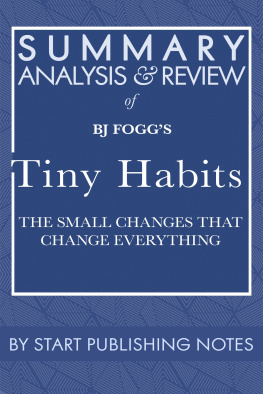
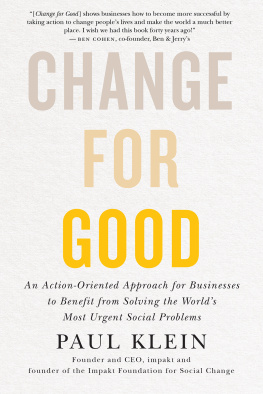
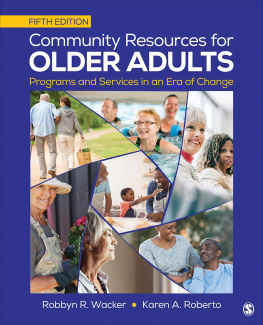

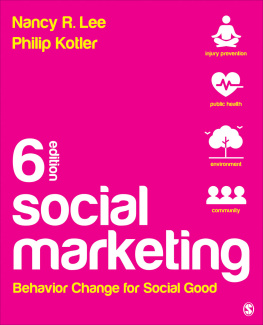
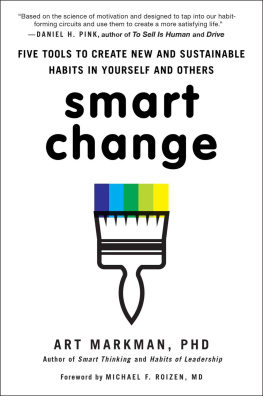
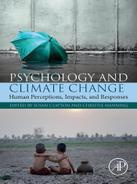

 Fostering Sustainable Behavior is a must-read for anyone interesting in improving the impact of community-based behavior change programs. Students and professionals alike find McKenzie-Mohrs practical, evidence-based advice both easy to grasp and easy to implement.
Fostering Sustainable Behavior is a must-read for anyone interesting in improving the impact of community-based behavior change programs. Students and professionals alike find McKenzie-Mohrs practical, evidence-based advice both easy to grasp and easy to implement.